Chelonians
1/39
There's no tags or description
Looks like no tags are added yet.
Name | Mastery | Learn | Test | Matching | Spaced |
|---|
No study sessions yet.
40 Terms
Chelonians are apart of the class
Reptilia
Chelonians are part of the order
Testudines (formerly Chelonia)
There are roughly ______ species of Chelonians.
300
Turtles are ________ or ________.
Aquatic or semi aquatic
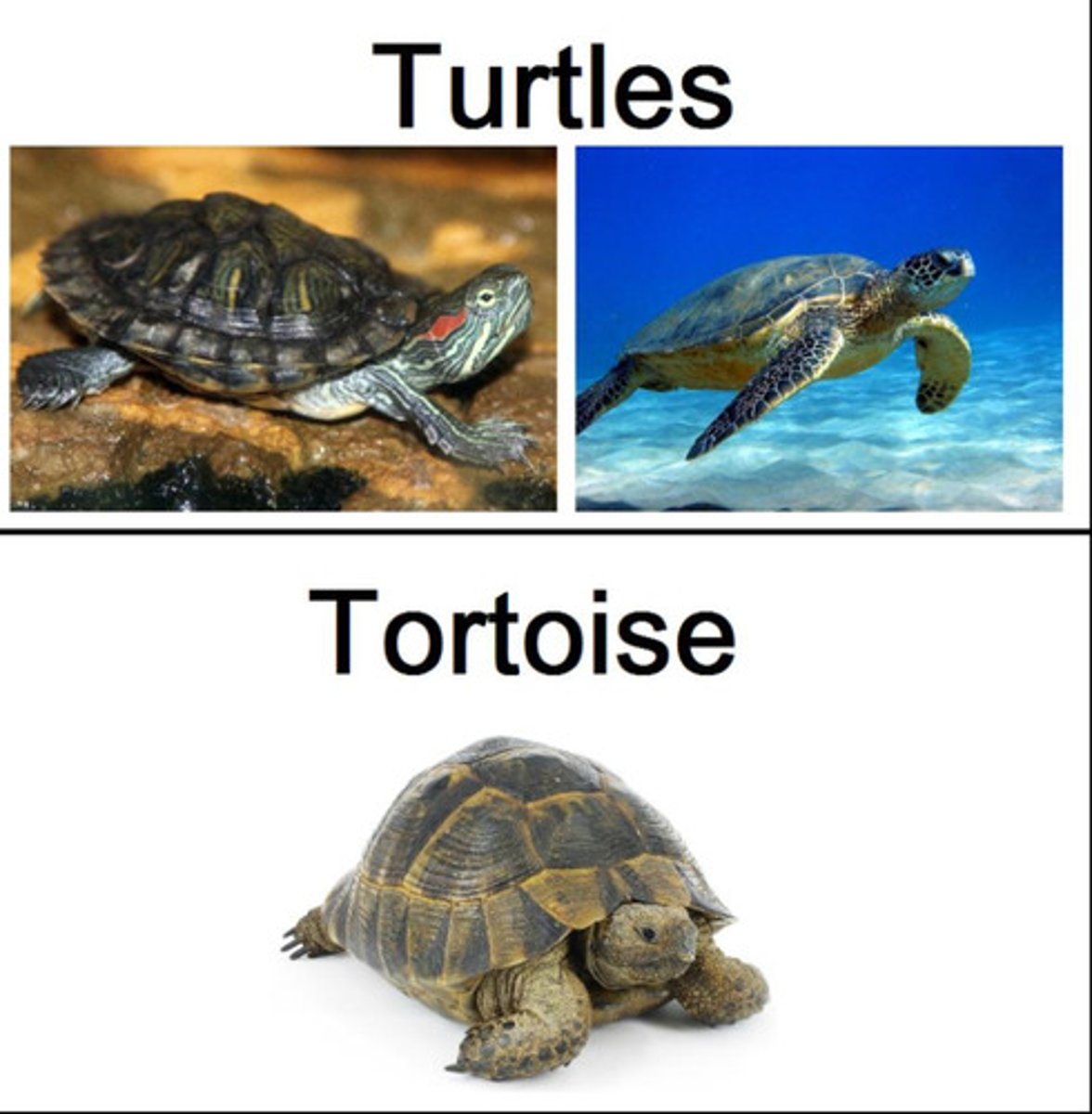
Tortoise are
Terrestrial
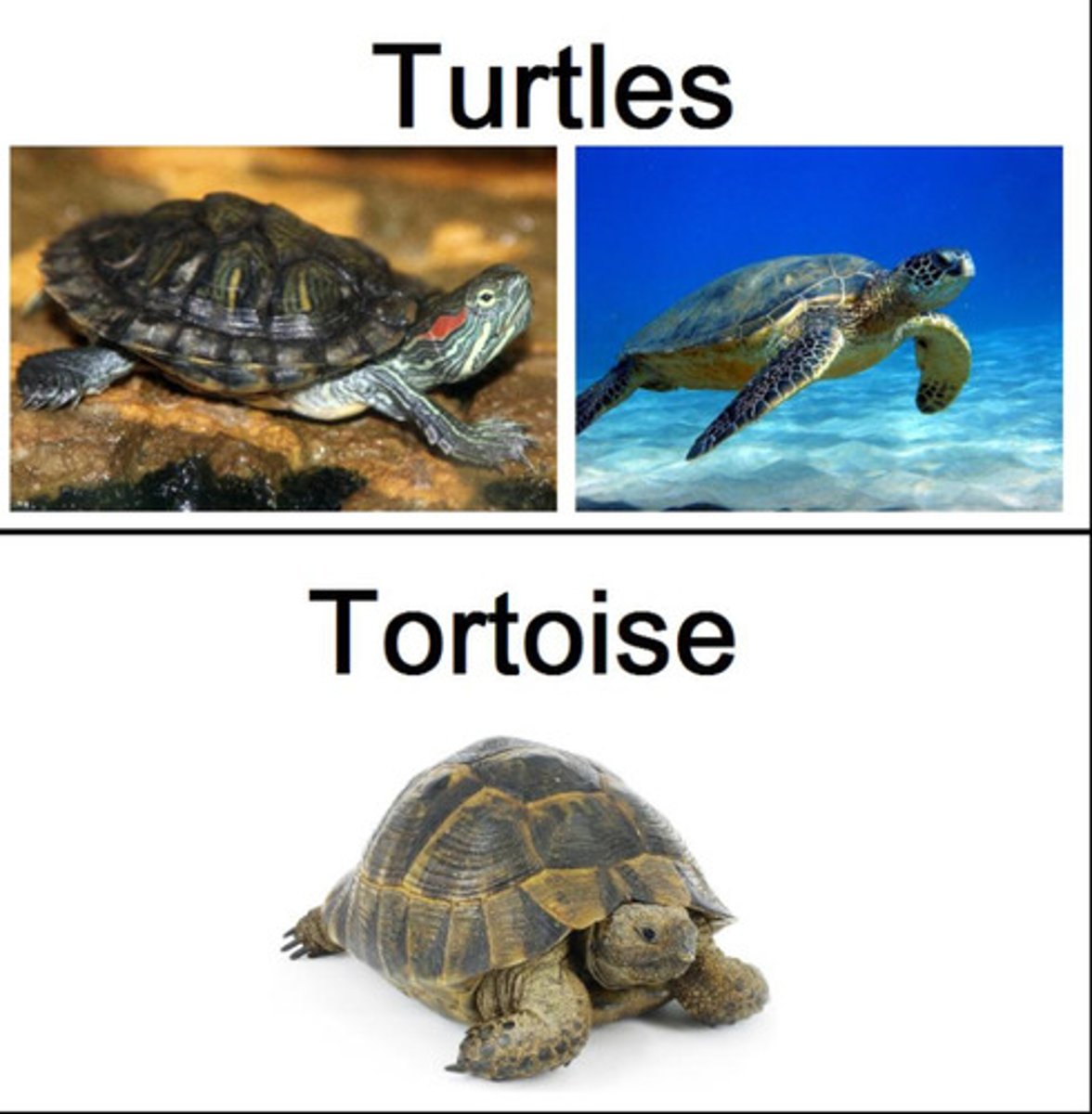
Turtle Characteristics
-flat & light weight shell
-webbed feet or flippers
-omnivores
-live primarily in water
-shorter lifespan (20-40 years)
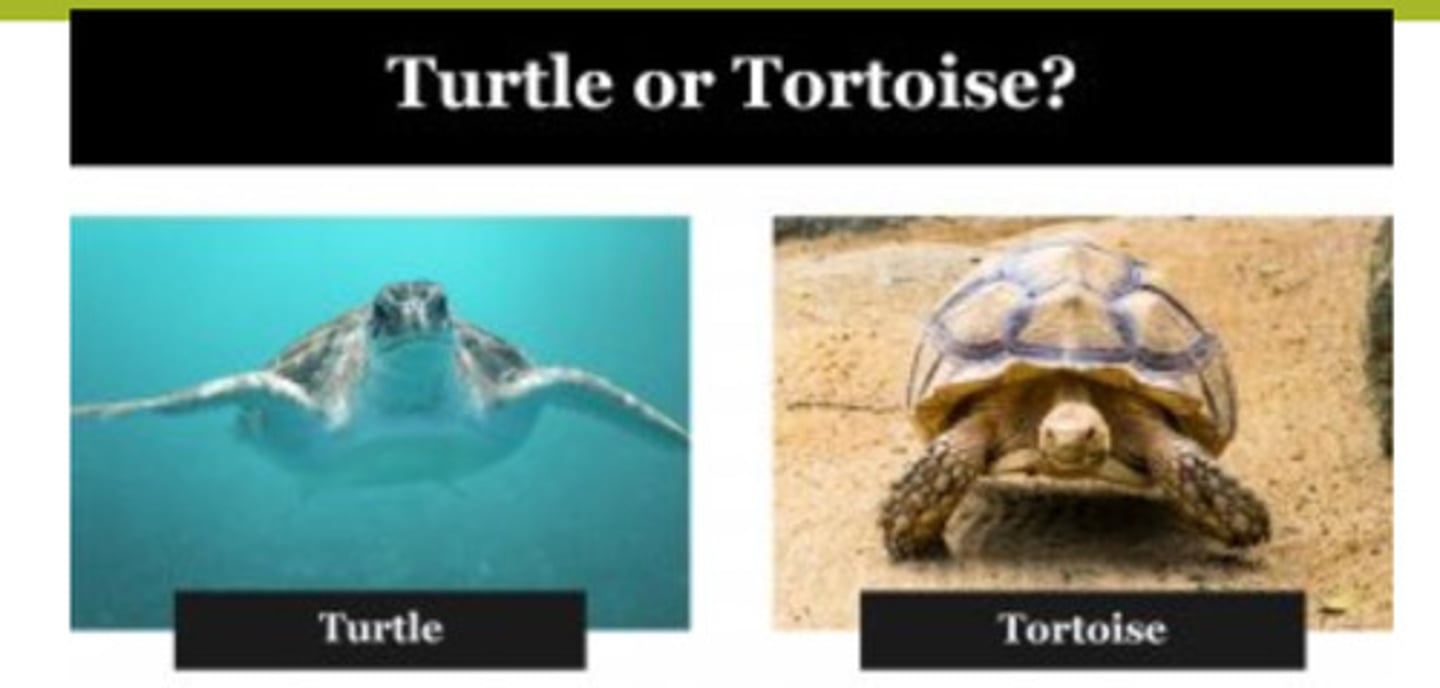
The plastron on the female is _______
Flat
Carapace is
dorsal part of shell consisting of 50 bones with neural bones attached to vertebrae
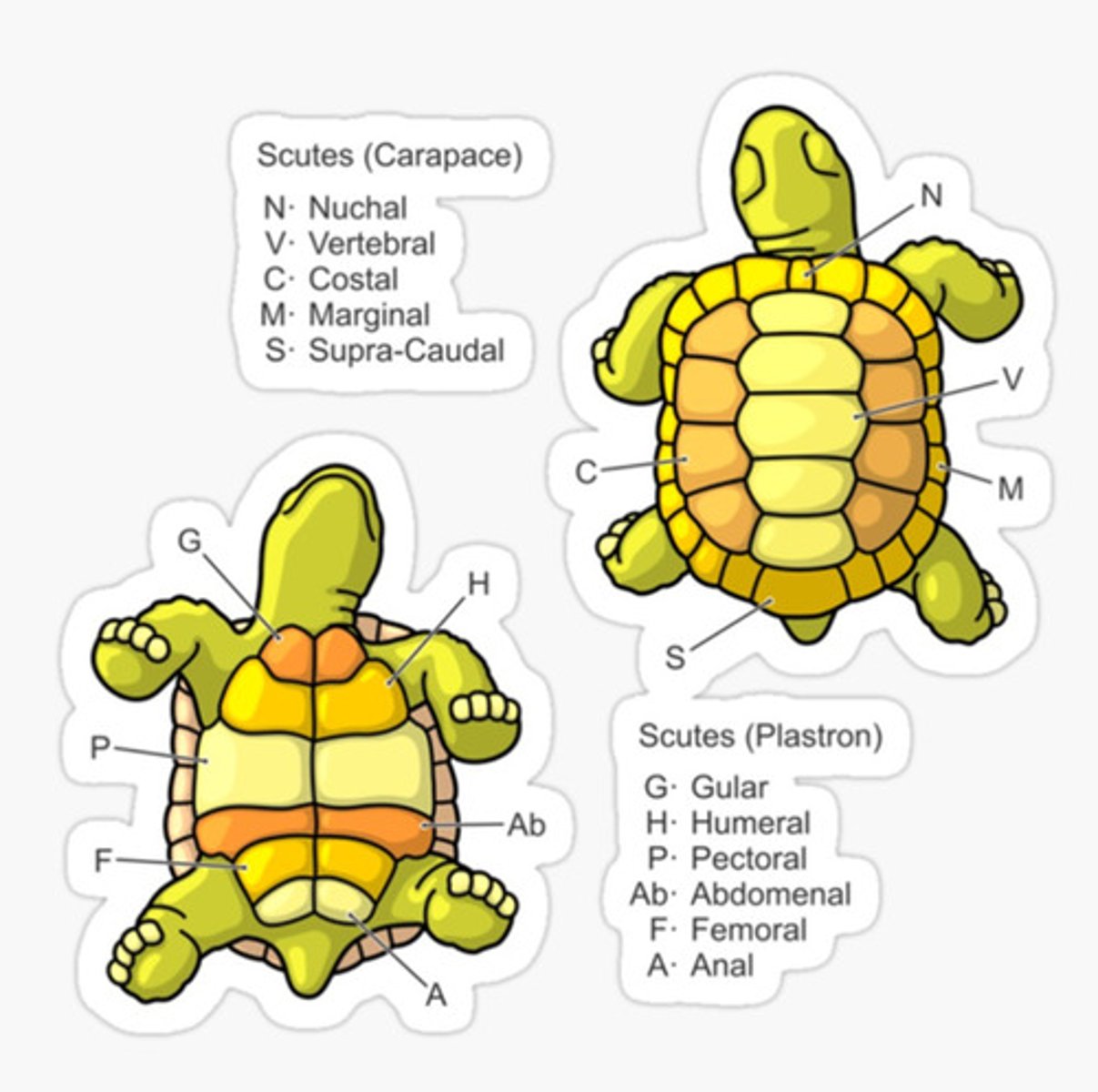
Plastron
-ventral aspect of shell consisting of 9 bones that fit/articulate well with each other
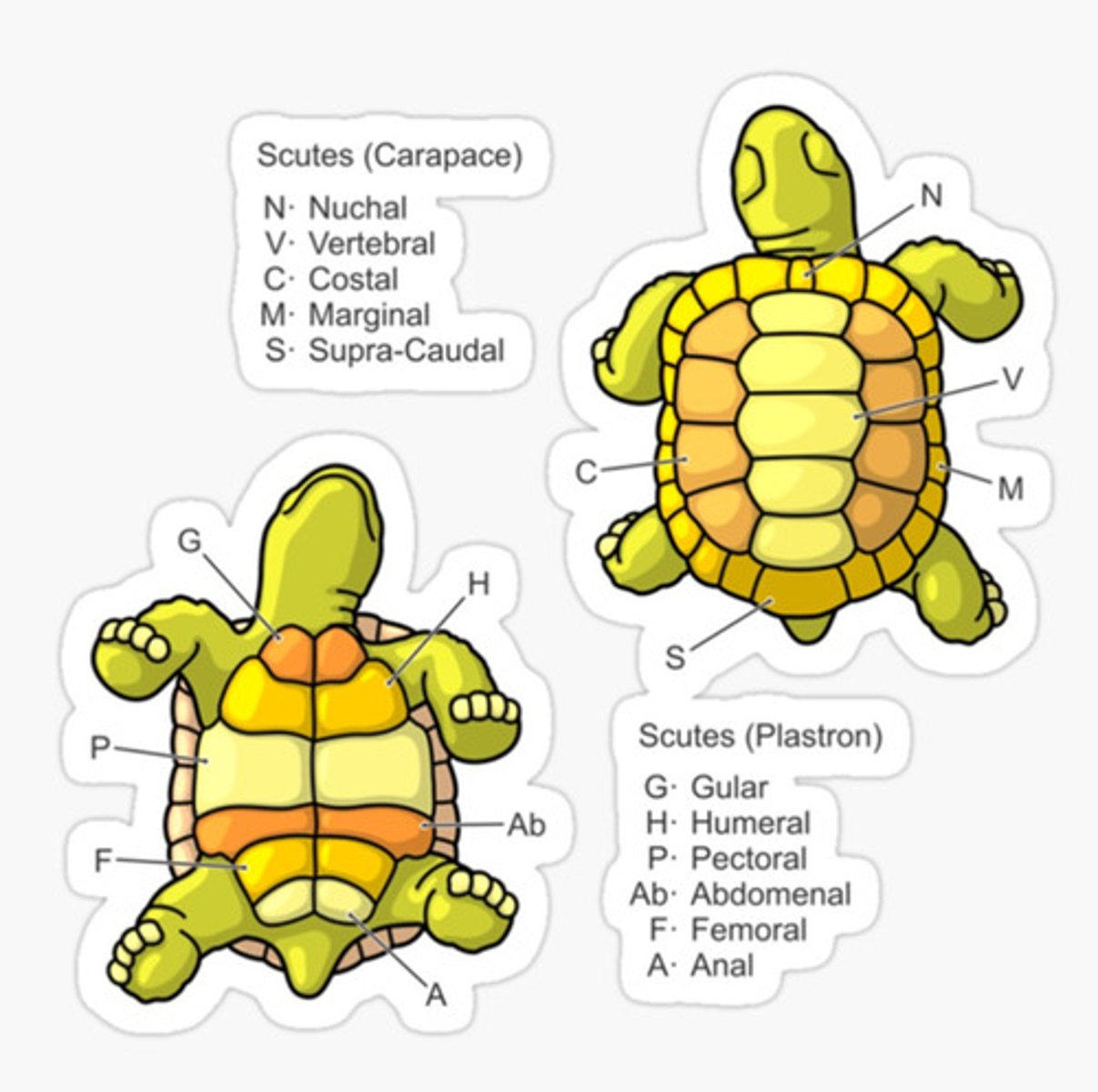
Tortoise Characteristics
-thick domed shell
-stumpy & clubbed feet
-herbivores
-live entirely on land
-longer lifespan (60-80 years)
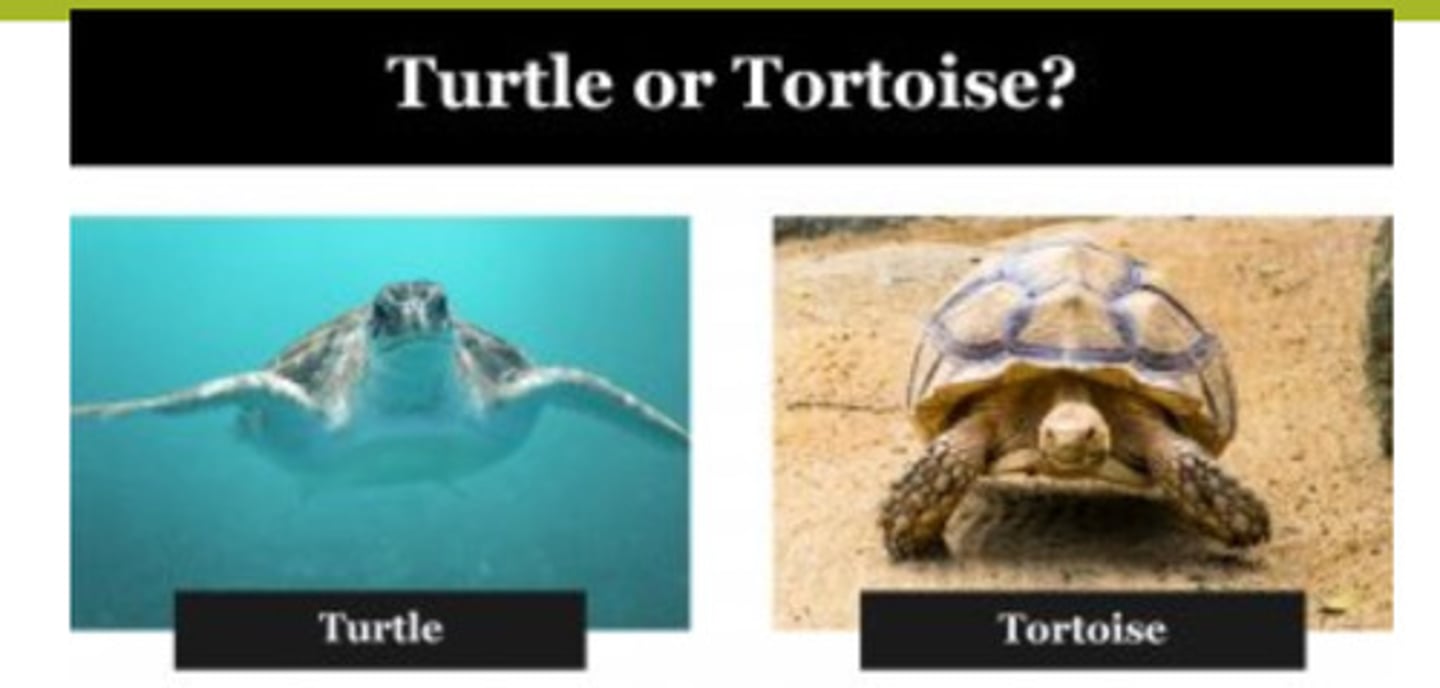
The plastron on the male is
Concave
Scutes
-shell is covered with keratinized epithelium that appear as "scales"
-some species may shed these but some might never
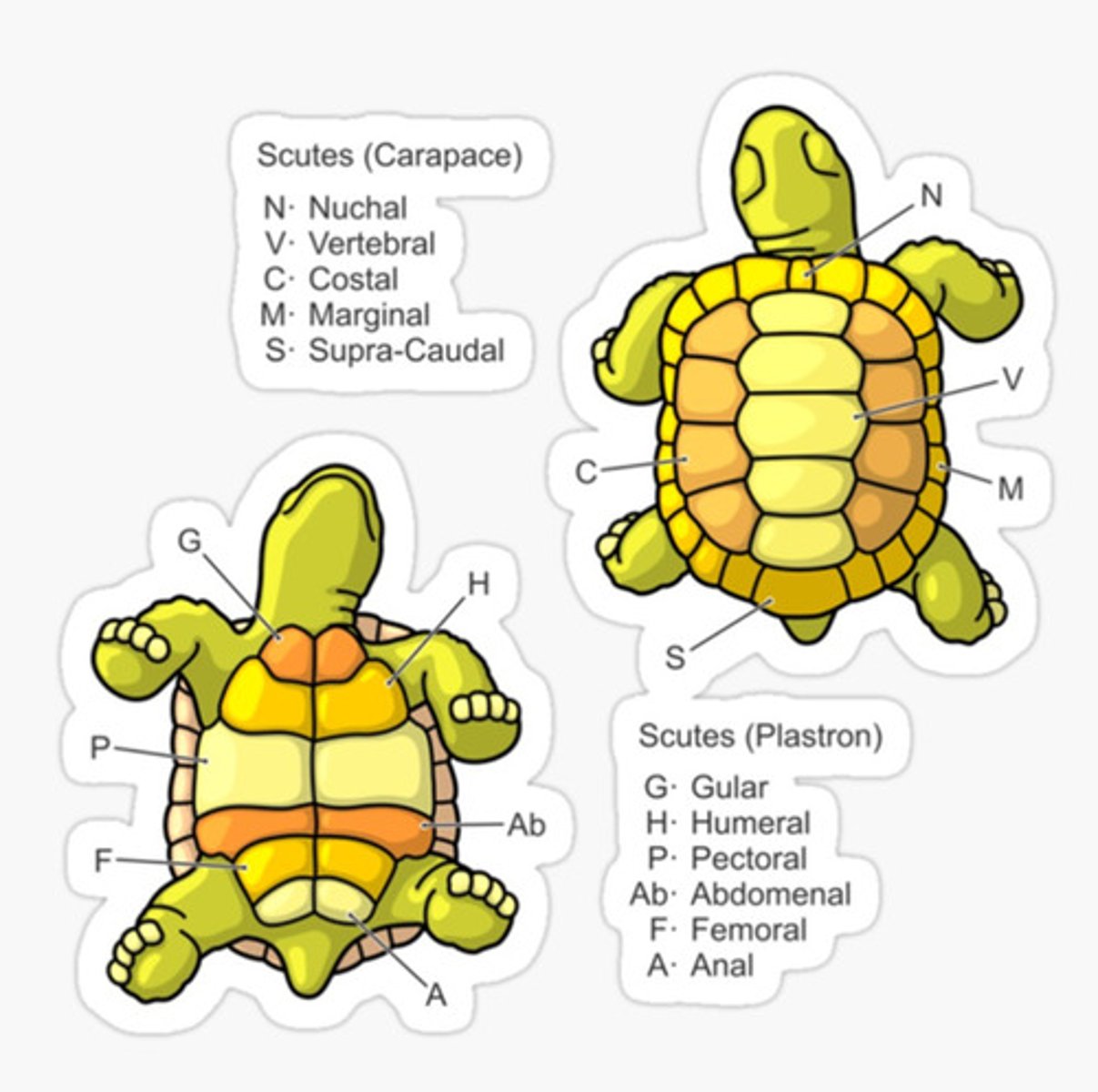
Soft shell turtles
-pancake like appearance
-lack bony scutes on their shells
-carapace is leather like very pliable
-snorkel like neck and head
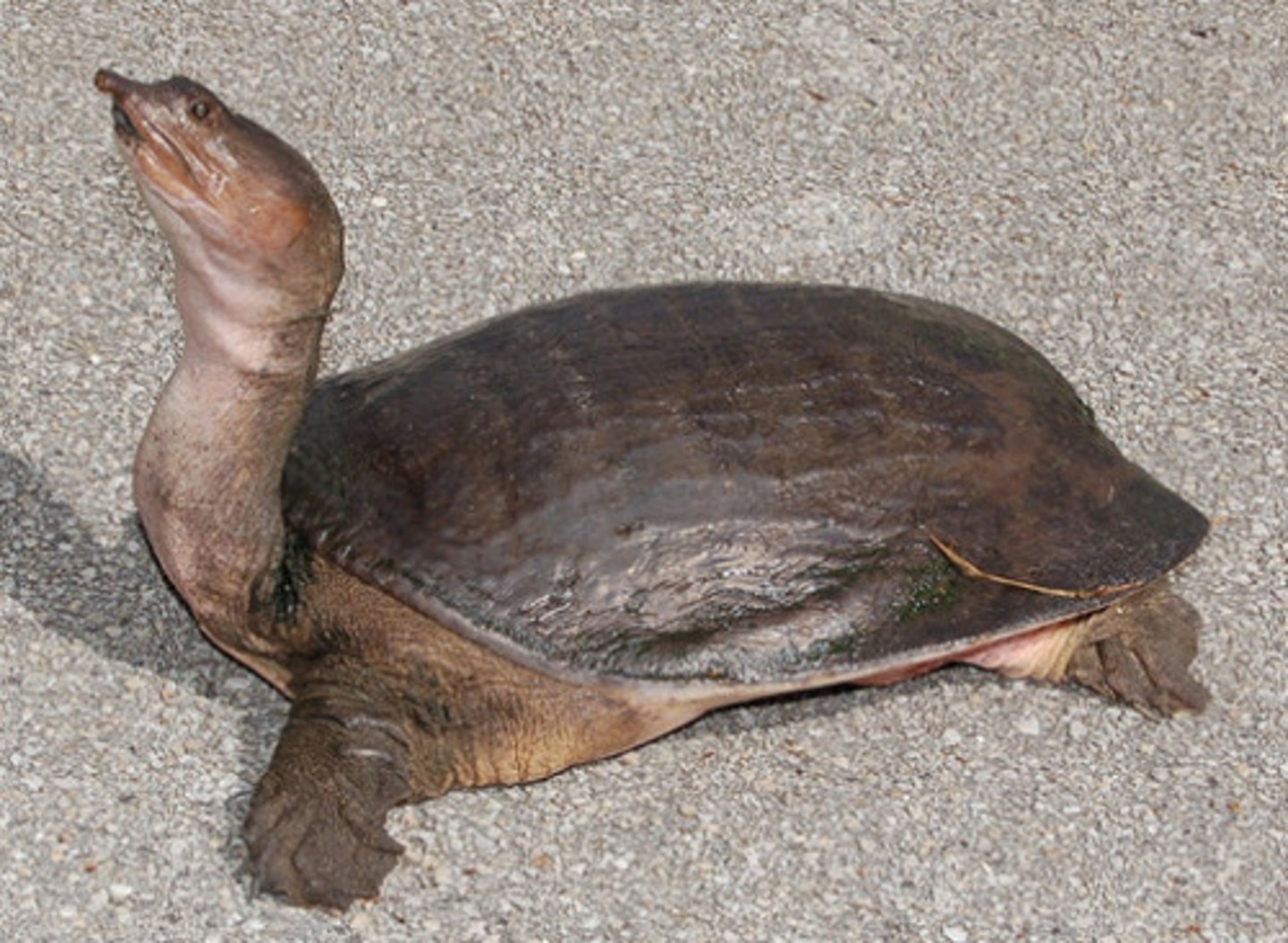
Chelonians integumentary
-varies by species (soft for aquatic, hardened, scales)
-epidermis (limbs, head, neck)
Chelonians cardiovascular system
3 chambered heart
-2 atria
-1 ventricle
Chelonians respiratory system
-nares, glottis, complete tracheal rings
-large compartmentalized lungs that attach dorsally to ventral aspect of carapace & attached ventrally to membrane that is attached to stomach, liver, intestinal tract
-gular pumping
Aquatic species exchange oxygen through
Oral and cloacal mucosa
Soft shelled species exchange oxygen through their
Skin
Chelonians GI
-large intestines are primary site of microbial fermentation in herbivores
-cloaca
-2 lobes on liver
-saliva glands produce mucus but not digestive enzymes
-large tongues that cannot distend from oral cavity
Chelonians Genitourinary system
-paired kidneys
-bi-lobed bladder that can be stored to be used for water and will void during stress
-single/large/dark colored penis (not used for urination)
-sexually dimorphic & oviparous
Turtle Husbandry
-water needs to be as deep as width of shell
(deeper if aquatic)
-fresh water, salt water, brackish
-proper sanitation is important to prevent bacterial infections
-filtration systems needed & maintaining POTZ
-if terrestrial require basking area and UVB
Tortoise Husbandry
-combined size of all carapaces should not exceed 25% of enclosures floor
-UVB bulbs should be changed every 6 months
-need 12 hours of light and should be placed 18-24 inches away from animal
-POTZ and allow for digging and burrowing
Turtle Nutrition
-omnivores with nutritionally complete pelleted diet
-young species (aquatic) eat more meat
-fish/skinned mice
-important to do research bc some will become herbivores as they age
Tortoise Nutrition
-herbivores with nutritionally complete pelleted diet
-leafy greens (85%), fruits as treats (10%), and high protein food (5%)
-adults fed 2-3 times a week and juvenile feed daily or every other day
Chelonian Restraint
-varies by species but tip downward or place in shallow water if retracts
Common drugs for Chelonians
-butorphanol
-Meloxicam
-doxycycline
-chloramphenicol
-enrofloxacin
Injection sites for Chelonians
-SQ (inguinal or ventral neck)
-Ice (pre femoral fossa)
-IM (front limbs)
remember renal portal system
Venipuncture sites
-jugular
-brachial (deep to triceps)
-cranial sinus (subcarapacial vein)
-dorsal tail vein (larger turtles)
heparin for collection
Chelonian Fecal Collection
-collect by warm water bath or colonic wash
-fecal float, centrifugation, and smear
-roundsworms, hookworms, pinworms or Protozoa
Injectable anesthetics for Chelonians
-midazolam
-telazol
-ketamine
-propofol
-alfaxalone
ET tube can be placed in Chelonians. T/F?
True
IPPV
1-6 rpm (no higher than 8cm H20)
Brumation (Hibernation) occurs during what months?
October/November to late February or early April
Signs of imminent hibernation
-decreased appetite
-decreased activity
-burrowing and hiding
Ensure the animal has not eaten in ________ days prior to hibernation.
10
Animal should be soaked _______ times a week prior to hibernation to ensure proper hydration.
2-3
The heat source should be removed _____ week prior to hibernation.
1
Common conditions of Chelonians
-MBD
-respiratory infections (ocular/nasal discharge w open mouth breathing)
-vitamin A deficiency (ocular or aural abscess)
-dystocia
-shell rot from fungal/bacterial infections from unsanitary conditions, improper diet/light/heat
-beak and shell deformations
Aural abscesses
-common in box turtles or semi/aquatic turtles
-low levels of vitamin A
-bacteria invades causing weakness/swelling on each side of head
-heat/fluids/electrolytes/supportive care/antibiotics/pain relief and vitamin A supplements
Euthanasia
Overdose of barbiturate (Ice/IV)